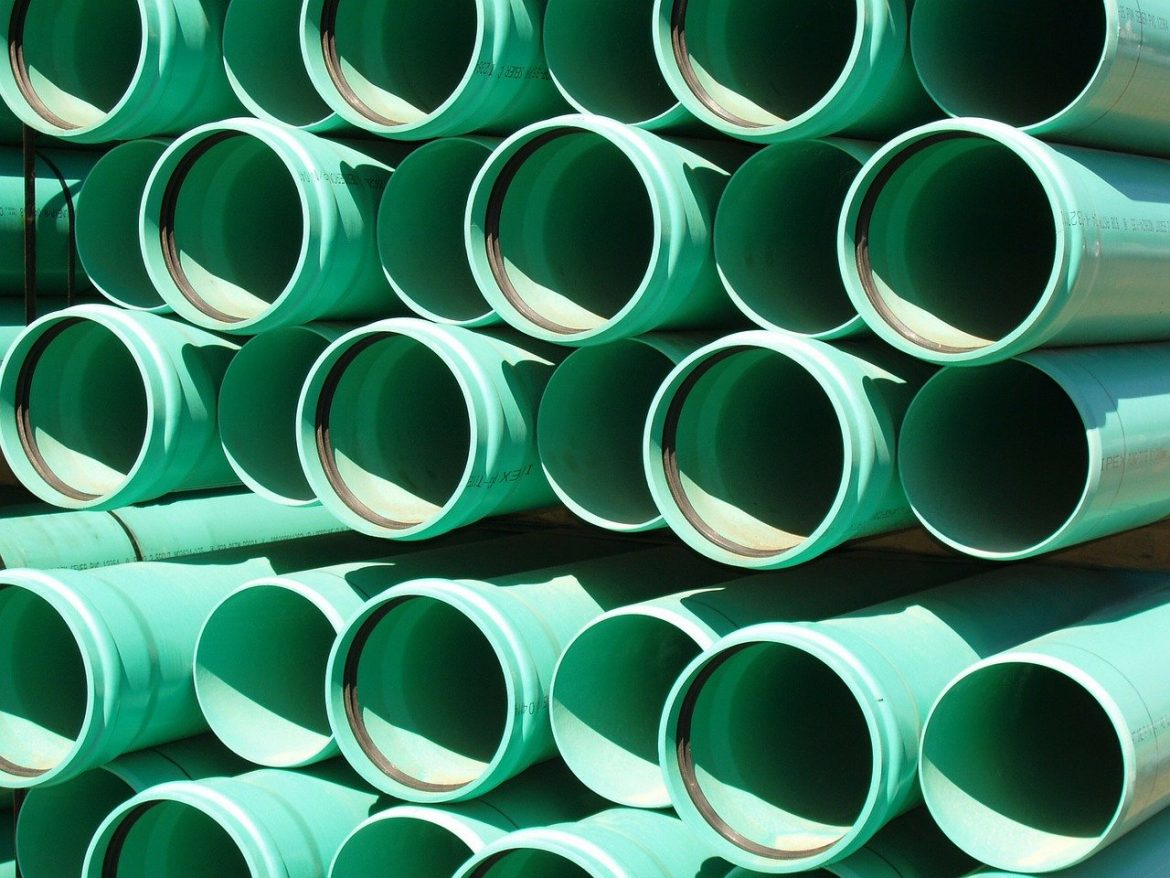Rury, wykonane z różnego rodzaju tworzyw sztucznych: PEX, PP-R, PP oraz PE, mogą być łączone na kilka różnych sposobów: poprzez łączenie rur na gwint, zgrzewanie, zaciskanie oraz skręcanie. Podpowiadamy, którą metodę łączenia rur wybrać w określonym przypadku i na co zwrócić uwagę przy łączeniu rur z tworzyw sztucznych.
Łączenie rur z tworzyw sztucznych – istotne informacje
Współcześnie w budynkach mieszkalnych instalacje wodociągowe, kanalizacyjne i grzewcze najczęściej wykonywane są z różnego rodzaju tworzyw sztucznych:
- PEX,
- PP,
- PVC
- PE
- PB
Tego typu rury stosuje się z uwagi na to, że tłumią wibracje, wyciszają szumy w instalacjach i nie przenoszą drgań. Ponadto są odporne na wilgoć i nie grozi im korozja. Materiały te nie wpływają na smak ani zapach, mogą być więc bez przeszkód stosowane w instalacjach doprowadzających wodę pitną. Wśród zalet rur wykonanych z tworzyw sztucznych wymienia się także niewielką wagę oraz w niektórych przypadkach możliwość gięcia rur. Co się z tym wiąże, są stosunkowo łatwe w montażu.
Typy połączeń rur i kształtek można rozdzielić na dwie grupy:
- stałe (inaczej nierozłączne) – w tym przypadku po połączeniu rur ich rozdzielenie demontaż nie jest możliwy bez ich zniszczenia. Takimi połączniami są połączenia przez zgrzewanie, klejenie przewodów oraz łączenie zaciskowe
- rozłączne – rury i inne elementy w takich połączeniach mają możliwość wielokrotnego montażu oraz demontażu bez ich uszkodzenia. Przykładami takich połączeń są połączenia gwintowe rur, a także połączenia kielichowe i kołnierzowe.
Jakie łączenie rur z tworzyw sztucznych jest najlepsze ?
Najczęściej dostępne sposoby łączenia rur i kształtek wynikają bezpośrednio z wyboru materiału i jego właściwości. Rury wodne wykonane z PP-R, czyli polipropylenu najczęściej łączy się poprzez zgrzewanie. Do łączenia rur PP-R używa się zwykle mufę, kolanek i trójników, a w przypadku łączenia rur o różnych średnicach, muf redukcyjnych PP-R lub trójników redukcyjnych PP-R. Do zgrzewania rur polipropylenowych stosuje się zgrzewarkę do tworzyw termoplastycznych. Rury PP-R można również łączyć na gwint. Wykorzystuje się do tego celu złączki z wtopionym gwintem mosiężnym wewnętrznym lub zewnętrznym. Złączki tego typu pozwalają na połączenie z innymi kształtkami PP-R wyposażonymi w gwint, lub połączenie z systemem wykonanym z innego materiału.
Rury kanalizacyjne PP
Łączy się poprzez połączenie kielichowe, czyli innymi słowy, łączenie rur na wcisk. Przydatna w poprawnym wykonaniu takiego połączenia jest pasta poślizgowa (np. pasta poślizgowa SKIDOL 1 kg). Zmniejsza ona tarcie w momencie wykonania połączenia, co obniża siłę potrzebną do wciśnięcia końcówki rury do kielicha i chroni uszczelkę kielicha przed uszkodzeniami. którą należy rozprowadzić we wnętrzu kielicha, po czym wciska tam rurę.
Rury kanalizacyjne z PVC
Występują w dwóch typach systemów: łączonym kielichowo i łączonym klejem. Połączenia kielichowe działają identycznie jak w przypadku rur kanalizacyjnych z PP. Przy użyciu rur PVC łączonych klejem połączenie wykonuje się docinając rurę do wymaganej długości i fazując ją w miejscu cięcia (wygładzając krawędzie). Bosą końcówkę rury i kielich należy wysmarować klejem, a wkładając rurę do kielicha należy przekręcić ją o 90°.
Łączenie rur PEX
Najczęściej stosuje się w instalacjach centralnego ogrzewania i ciepłej wody użytkowej. Do łączenia rur PEX najczęściej stosuje się kształtki łączone zaciskowo. Do zaciskania wykorzystuje się specjalistyczne zaciskarki. Są to urządzenia o odpowiednich szczękach przystosowanych do systemów kształtek konkretnych producentów, które wykonują połączenie w sposób zautomatyzowany i powtarzalny. Łączenie przez zaciskanie jest nierozłączne.
Łączenie rur z PE
W przypadku rur PE można zastosować kilka metod łączenia: zgrzewanie doczołowe, zgrzewanie elektrooporowe lub skręcanie. Zgrzewanie polega na kontrolowanym rozgrzaniu powierzchni łączonych rur i kształtek do temperatury, w której następuje uplastycznienie materiału. Po wykonaniu i ostygnięciu połączenia jest ono nierozłączne.
W przypadku zgrzewania doczołowego wykorzystuje się zgrzewarki na przykład w formie rozgrzanej płyty, do której przykłada się końcówki zgrzewanych rur. Po uzyskaniu pożądanej temperatury usuwa się płytę i ściska łączone elementy ze sobą. Tę metodę stosuje się najczęściej w przypadku rur PE o dużych średnicach (np. rura wodociągowa 125×7,4 PE/PE100 SDR17 TYTAN RC 2/2 L=12m niebieska z biał.paskiem Kaczmarek).
Zgrzewanie elektrooporowe wykorzystuje specjalny typ kształtek, których kielichy zawierają specjalne spirale grzewcze. Po podłączeniu do kształtki zgrzewarki elektrooporowej, np. zgrzewarka Elektrooporowa Eurotech 1000, następuje zgrzanie kształtek z rurami.
Rury wodociągowe z PE o małych średnicach można również połączyć bez uzycia specjalistycznych narzędzie, za pomocą kształtek skręcanych. Kształtki skręcane, np. Dwuzłączka PE 25 mufa skręcana to typ złączek zaciskowych, w których dokręcanie zewnętrznej części kielicha powoduje zaciśnięcie wewnętrznego pierścienia na rurze. Jest to połączenie rozłączne.
Łączenie rur – podsumowanie
Jak widać, nie ma jednoznacznej odpowiedzi na pytanie: która metoda łączenia jest najlepsza? Wybór sposobu łączenia rur w instalacji zależy od tego jaką budujemy instalację, na jaki materiał się zdecydujemy, jakie narzędzia mamy dostępne, a także to czy zależy nam na możliwości modyfikacji połączeń po ich zmontowaniu. Pamiętajmy, że łączenie rur będzie mozliwe tylko przy użyciu kształtek. O ich rodzajach można przeczytać w osobnym artykule.
